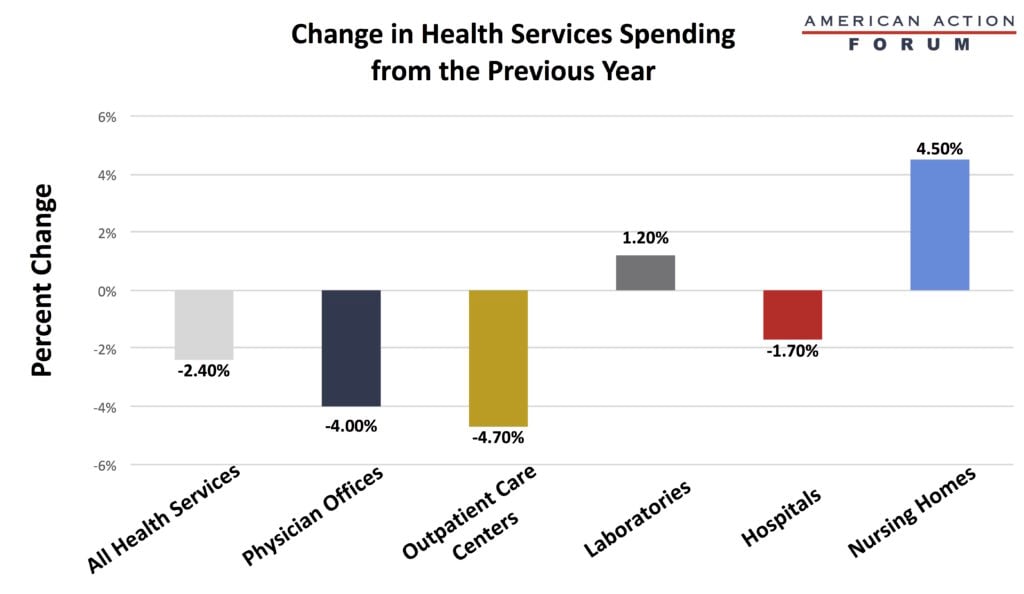Weekly Checkup
December 11, 2020
The Durability of President Trump’s Legacy
As we near the end of President Trump’s term in office, it’s reasonable to turn to questions of legacy. The Trump Administration’s entire legacy, even just in the realm of health policy, is too much to bite off for one issue of the Weekly Checkup, but one observation does seem to stand out: So many of the Trump Administration’s actions are likely to be short-lived. This isn’t a comment on the policies themselves, but instead on the way they have been enacted. President Trump, like President Obama in the latter years of his presidency, has leaned heavily on executive action and rulemaking to implement his desired policy outcomes, but this method of policymaking comes at a cost, and that cost is durability.
Much ink has already been spilled speculating on the degree to which the Biden Administration will spend its early months—maybe even its first year—undoing many of President Trump’s policies, particularly regarding the Affordable Care Act (ACA). The challenges facing the incoming administration demonstrate that executive actions have differing degrees of staying power. An executive order can be reversed quite easily by way of repeal or through a new executive order. A straightforward example is the Mexico City policy, regulating federal funding for family planning services overseas, which is implemented and revoked each time the White House has changed party control since Ronald Reagan first implemented it. Federal regulation, on the other hand, can be a bit stickier because the process for rulemaking is time consuming, unwieldly, and subject to legal challenge. At the same time, however, policies made through rulemaking can be undone through rulemaking just the same.
Recent administrations have increasingly relied on executive actions and the regulatory process to accomplish policy priorities. There are plenty of reasons for this shift, and each administration has had unique incentives. The increase in administrative action as opposed to legislative action, however, corresponds with two trends: increasing gridlock in Congress amid increasing partisanship, and the expansion of the size and power of the executive branch. Put simply, it has become ever more difficult to pass significant legislation, while it has become, relatively speaking, easier to pursue executive action. President Obama summed up this reality most memorably when he declared after Republicans took over the Senate in 2014, “I’ve got a pen, and I’ve got a phone.”
The easy path is not always the wisest path, and doing the hard work of winning congressional majorities for major policy initiatives invariably leads to more durable policies and legacies. The defining policy achievement of the Trump Administration is almost inarguably the Tax Cut and Jobs Act, and the policies contained therein will not be easily rolled back. At the same time, the Trump Administration’s many health policy initiatives largely fall in the realm of executive action. Once the legislative effort to repeal the ACA fell apart, President Trump resorted to rulemaking to implement policies such as the expansion of short-term, limited-duration plans and association health plans. Similarly, Trump was never able to bring together a legislative coalition to address drug pricing, forcing his administration to pursue a last-ditch effort to implement his proposals through interim finals rules in the waning days of his administration—rules that may not survive legal challenge and could be reversed by the Biden Administration if the president so desires.
None of this is intended to dismiss the difficulty of building congressional majorities for controversial policies. And certainly, the Trump Administration faced substantial opposition in Congress, limiting its options. But it should serve as a cautionary tale to future administrations. Leaning heavily on the executive branch’s administrative powers can be cathartic when facing entrenched opposition on Capitol Hill, but those victories can be short lived.
Chart Review: Health Care Spending by Service Area
Julia Demeester, Health Care Policy Intern
The graph below shows how spending has changed across the health care sector this year. Spending across all health services has decreased by 2.4 percent, but this average masks significant variation. These increases and decreases tend to show which services are being utilized and which are not. Laboratories and nursing homes both saw an increase in spending through the first nine months of the year. This rise is not surprising, as laboratories are in high demand and nursing homes are increasing spending to care for their residents. Outpatient care centers and physician’s offices saw a decrease in spending of 4 and 4.7 percent respectively. Many individuals were forced to cancel specialty appointments and in-person visits and either moved to telehealth or simply delayed services. The 1.7 percent decrease in hospital spending is somewhat surprising, as many are receiving treatment for COVID-19 there. A large majority of hospital revenue, however, comes from elective procedures that were cancelled in light of the pandemic. Spending on services has declined, but spending on prescription drugs has risen: An analysis conducted by the Kaiser Family Foundation suggests that if spending on prescription drugs was added to the equation, total health spending would only decrease by 0.5 percent.
Data source: Health System Tracker
From Team Health
The Administration’s Action Plan for Improving Maternal Health – Director of Human Welfare Policy Tara O’Neill Hayes
The administration released two reports with wide-ranging recommendations and policies that should make a positive impact on maternal health.
Worth a Look
Wall Street Journal: After 2020 Losses, Some Democrats Question Party’s Health-Care Focus
Reuters: AstraZeneca hitches ride with Russia’s Sputnik in vaccine race











